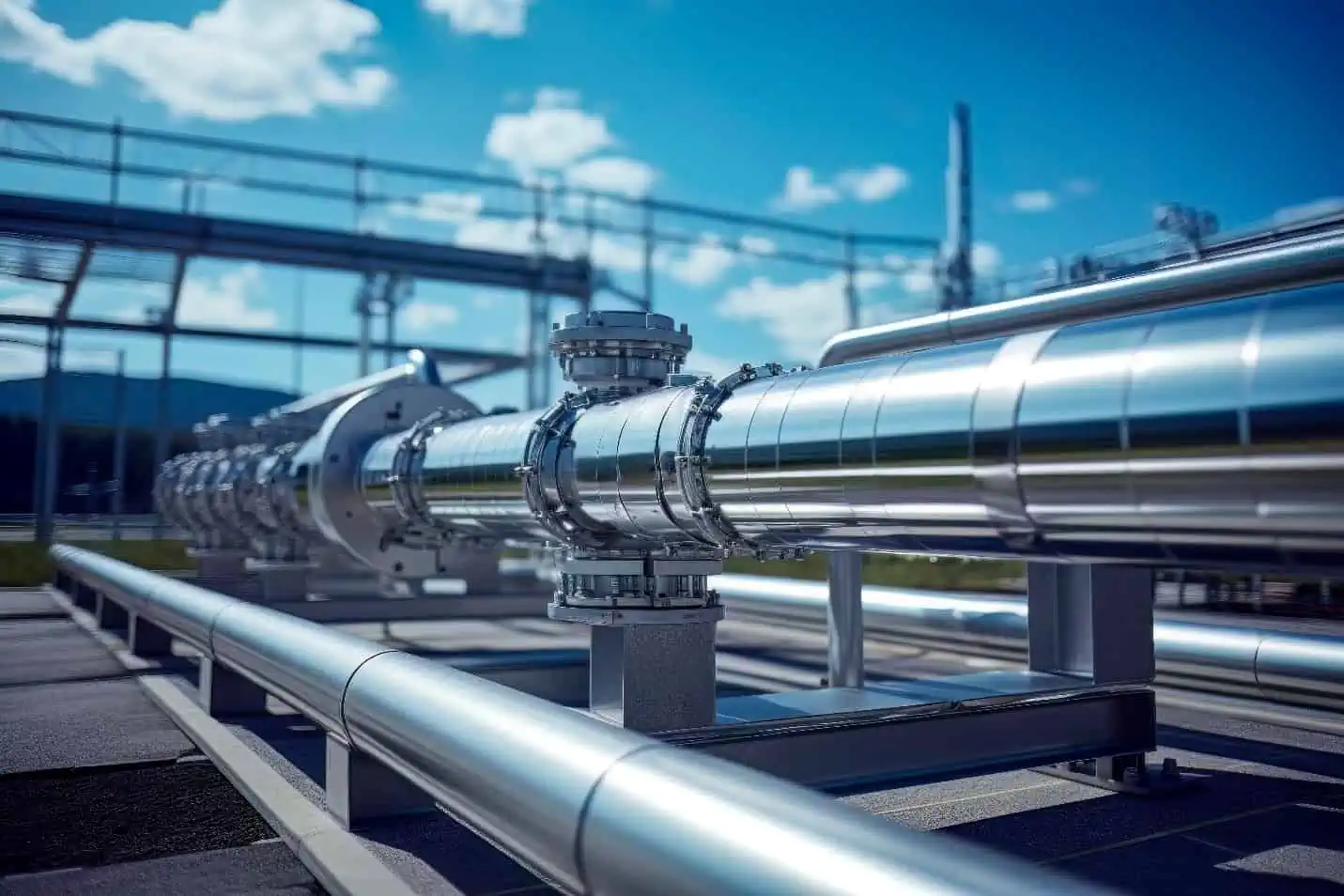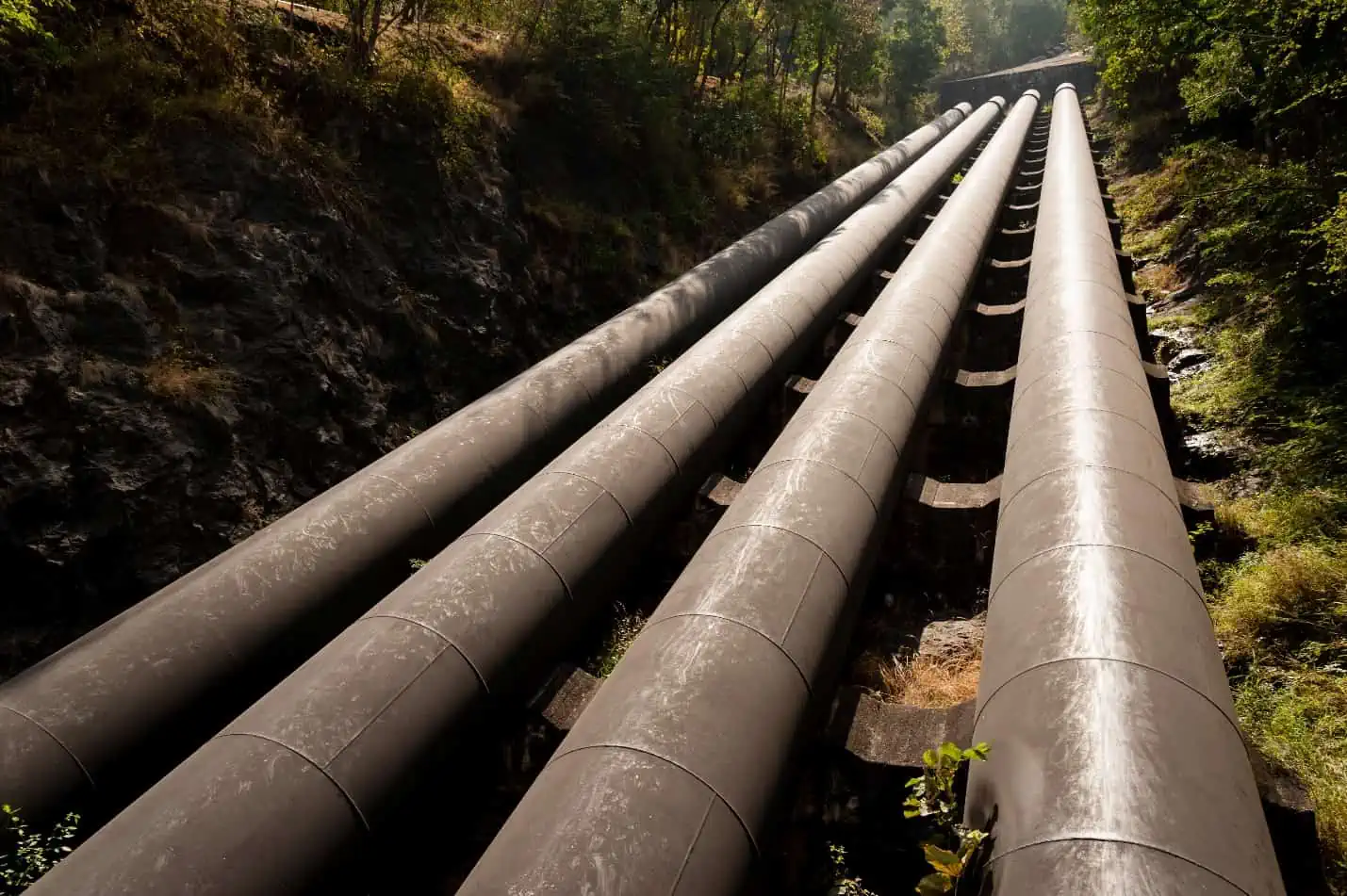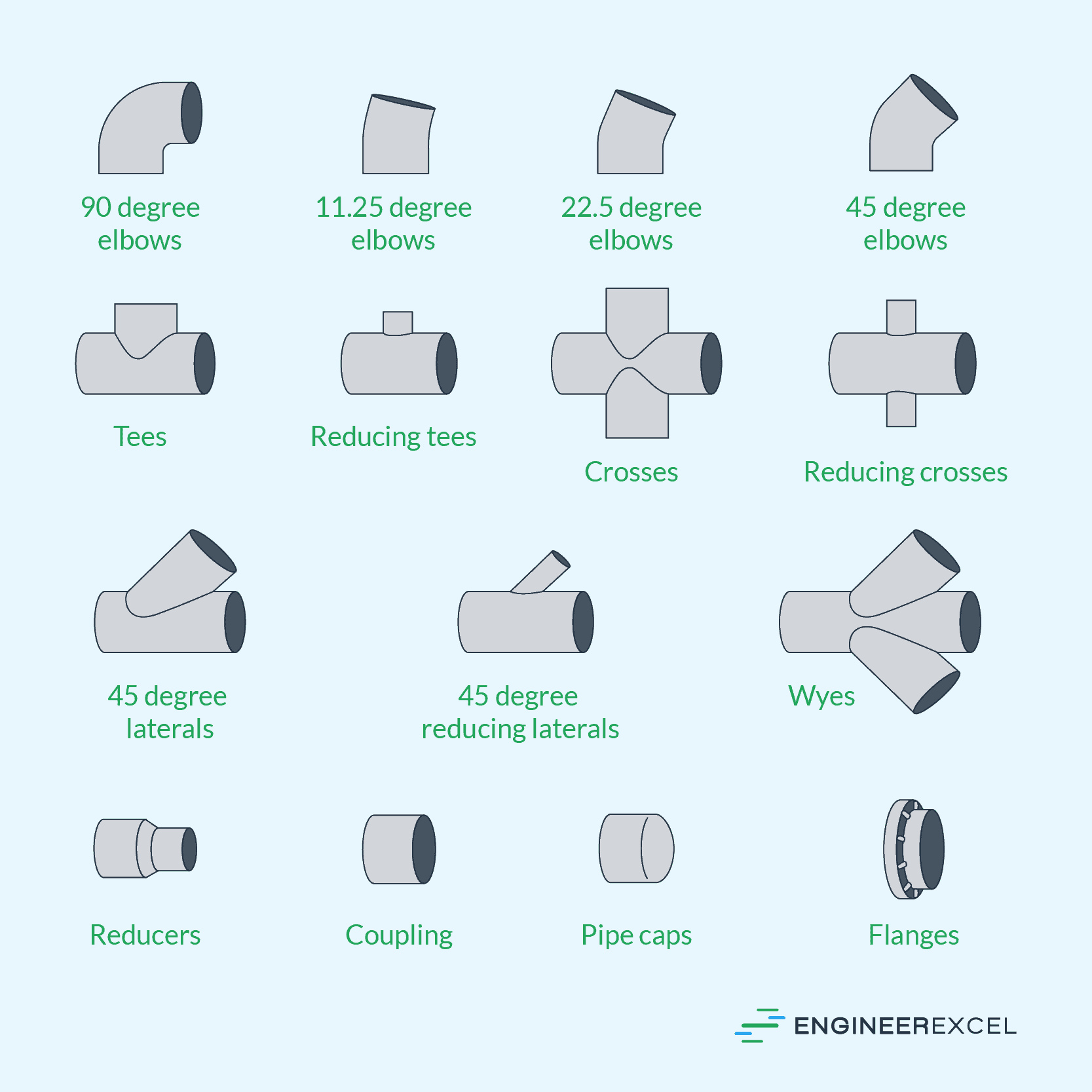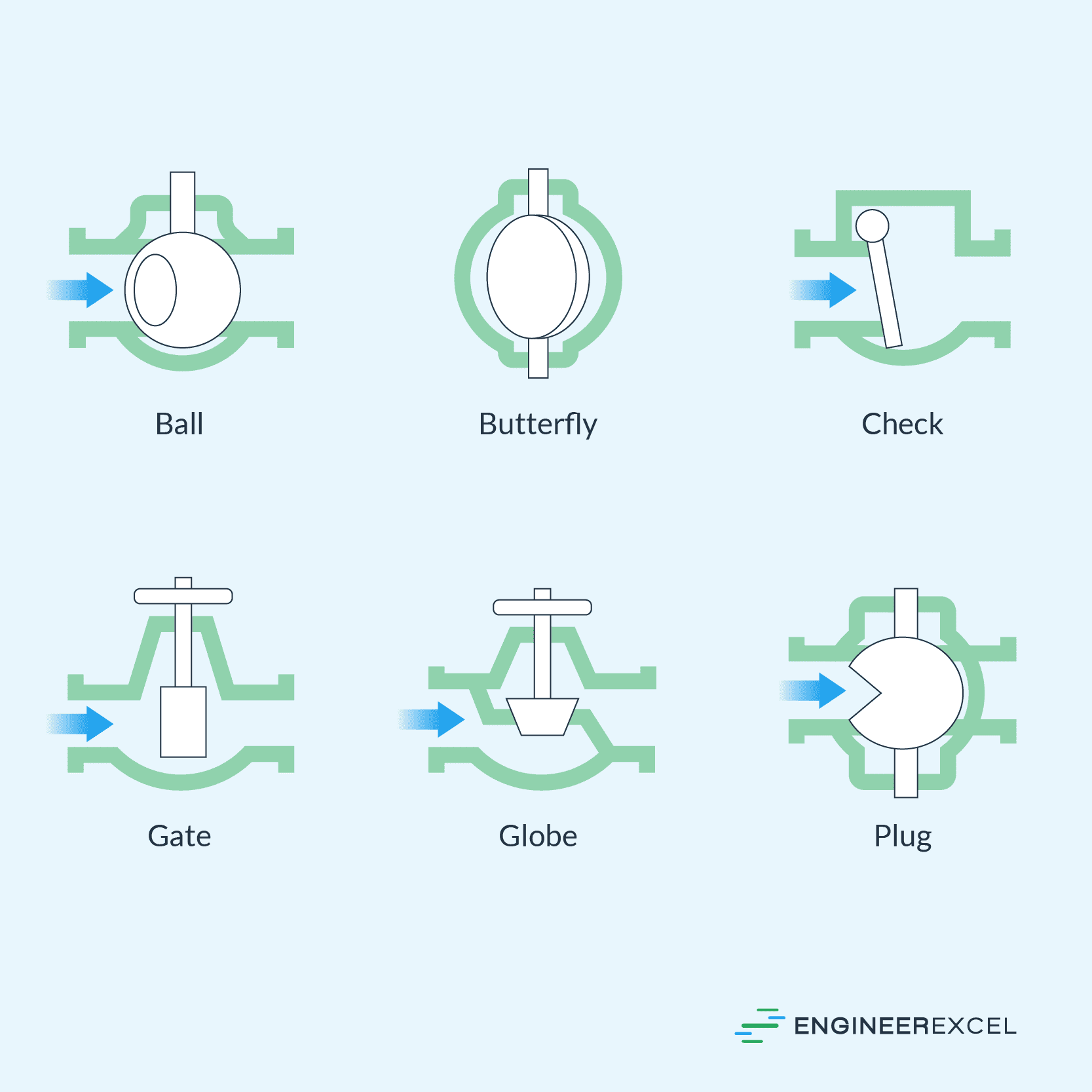Pipe systems are networks of conduits used to transport and distribute fluids such as water, oil, and gas. These systems consist of pipes, valves, and fittings that work together to maintain the flow and pressure of the fluid being transported.

In this article, we will discuss the different types of pipe systems, their applications, components, and factors to consider in pipe system design.
What are Pipe Systems
Pipe systems are a network of conduits that are used to transport and distribute fluids such as water, oil, and gas. These systems usually consist of pipes, valves, and fittings that work together to maintain the flow and pressure of the fluid being transported.
There are different pipe system configurations, depending on the application. For example, the figure below shows a simple schematic diagram of a water treatment pipe system.

Elevate Your Engineering With Excel
Advance in Excel with engineering-focused training that equips you with the skills to streamline projects and accelerate your career.

Applications of Pipe Systems
The most common application of pipe systems is in water supply and distribution. Pipe systems are essential in transporting potable water from treatment plants to residential and commercial buildings. They are also used in irrigation systems for agriculture and in fire protection systems.
In the oil and gas industry, pipe systems are used to transport crude oil and natural gas from drilling sites to processing plants and refineries. They are also utilized in the distribution of petroleum products such as gasoline and diesel.
Heating, ventilation, and air conditioning (HVAC) systems also rely on pipe networks to transport cooling and heating fluids, such as water and refrigerants, throughout a building.
In chemical plants and refineries, various pipe systems are used to transport chemicals, liquids, and gases for different processes like mixing, separation, and purification.
Lastly, in power plants, pipe systems are employed to transport steam, water, and other fluids necessary for electricity generation and cooling purposes.
Types of Pipe Systems
Pipe systems can be classified into two main types based on the force or pressure used to convey fluids: gravity pipe systems and pressure pipe systems.
Gravity Pipe Systems
Gravity pipe systems are designed to transport fluids by utilizing the natural force of gravity. These systems are commonly used for stormwater drainage, sanitary sewer systems, and irrigation. In gravity systems, pipes are installed at an appropriate slope, ensuring that the fluid flows downward from a higher elevation to a lower elevation.

In a gravity pipe flow, the hydraulic head can be broken down into two parts: the pressure head and the elevation head. The pressure head is determined by the height of the fluid in the source tank, while the elevation head is based on the tank’s height above the discharge point, which is equal to the vertical component of the pipeline. Therefore, the greater the height of the tank and fluid, the more potential energy is available to drive the flow.
Pressure Pipe Systems
Pressure pipe systems are designed to transport fluids under pressure, which makes them ideal for industries and processes that require precise regulation and management of fluid flow. These systems can be achieved using pumps or other mechanical means and are capable of transporting fluids over long distances and uphill, making them suitable for areas with varying topography.
Pressure pipe systems are widely utilized in water distribution, industrial applications, and fire suppression. However, they have higher installation and operational costs due to the need for pumps and pressure maintenance.
Components of Pipe Systems
Pipes
Pipes are utilized for transporting fluids, such as liquids and gases. They are available in various materials, sizes, and shapes.
Circular pipes are the most common shape in fluid transportation, particularly for liquids. This is due to their structural capabilities, allowing them to withstand large pressure differences between the inside and the outside without undergoing significant distortion. Additionally, circular pipes offer low installation costs and efficient flow characteristics, making them a top choice for many engineering applications.
On the other hand, non-circular pipes or ducts are typically employed in situations where the pressure difference is relatively small, such as in heating and cooling systems of buildings. In these instances, manufacturing and installation costs may be lower, and the available space for ductwork is often limited. Rectangular ducts, for example, can be more easily installed in tight spaces compared to circular pipes.
Pumps
Pumps are the heart of pressure pipe systems that provide the necessary force for moving fluids through pipes, overcoming the natural resistance that arises from friction and gravity. There are numerous types of pumps, such as centrifugal, positive displacement, and diaphragm pumps, each with its own functionality and applications. The selection of the appropriate pump type depends on factors like fluid properties, flow rates, and system requirements.
Fittings
Fittings are used to connect pipes and create the desired flow path within a piping system. They come in various shapes and sizes to suit different connection requirements. Some common types of fittings include elbows, tees, reducers, and couplings, shown in the diagram below.

Valves
Valves are components used to control the flow of fluids in piping systems. They can be used to regulate pressure, direct flow, or isolate sections for maintenance purposes.
Some common valve types include gate valves, globe valves, check valves, and ball valves, shown in the diagram below. The choice of valve type depends on the specific applications and functionalities needed within the piping system.

Supports and Hangers
Proper support and hangers help prevent stress-related damages and maintain the integrity of a piping system. Supports and hangers provide support to pipes under various loads, including weight, pressure, and thermal expansion. They come in many forms, such as clamps, brackets, and spring hangers, each designed for specific pipe configurations and installation requirements.
Insulation
Insulation plays a vital role in maintaining a pipe system’s performance by reducing heat transfer between pipes and their surroundings. Insulation materials include fiberglass, mineral wool, and polyurethane foam, among others. Proper insulation can help prevent energy loss, reduce noise levels, and protect personnel from extreme temperatures.
Instrumentation and Control System
Instrumentation and control systems are essential for monitoring and managing pipe system performance. These systems include a range of instruments, such as flow meters, pressure sensors, and temperature sensors, to collect data on system parameters. Control systems, like programmable logic controllers (PLCs) or distributed control systems (DCS), are used to process this data and automate control functions, ensuring efficient operation and safety.
Other Accessories
Various other accessories are used in pipe systems, including expansion joints, traps, and strainers. Expansion joints allow for thermal expansion and contraction, preventing damage from pipe movement over time. Traps and strainers help to remove unwanted debris and impurities from the fluid flow, protecting the overall integrity and efficiency of the piping system.
Factors to Consider in Pipe System Design
Type of Fluid
The fluid being transported plays a critical role in the pipe system design. Different fluids vary in viscosity, density, corrosiveness, and flammability. Understanding the fluid’s properties will affect the choice of pipe material, size, and layout.
Fluid Pressure
Taking into account the pressure within the pipe system is essential for ensuring safety and efficiency. Pipes and fittings must be able to withstand the maximum pressure exerted by the fluid. Pressure drop calculations may be necessary to maintain optimal flow and avoid issues such as cavitation and noise.
Fluid Temperature
Temperature variation affects the thermal expansion or contraction of the pipe material as well as the fluid’s viscosity and density. Sustained exposure to high or low temperatures could necessitate the use of specific materials or insulation methods to maintain thermal stability.
Flow Rate
The flow rate affects the pipe size required to maintain an adequate flow velocity. Accurate flow rate measurements are essential for calculating the appropriate pipe diameter to prevent issues such as erosion, wear, or noise caused by high velocities or sedimentation from low velocities.
Piping Codes and Regulatory Requirements
Adherence to piping codes and regulatory requirements ensures that the pipe system meets safety and performance standards set by industry and government bodies. Compliance with these guidelines is crucial for guaranteeing the system’s longevity and reducing the likelihood of accidents or fines.
Pipe Material
Selecting the appropriate pipe material is important for ensuring the system’s durability and efficiency. Factors to consider when choosing a material include corrosion resistance, compatibility with the fluid, ease of installation, and cost. Common materials include steel, copper, plastic, and cast iron.
Pipe Size
Proper sizing ensures an optimal balance between pressure drop, velocity, and the need to minimize energy losses. Pipe sizing calculations must take into account the fluid properties, required flow rate, and pressure drop limitations.
Pipe Length and Layout
The pipe system’s layout and total length significantly impact its performance. Longer pipelines often experience higher pressure drops, necessitating the use of booster pumps or larger pipe diameters. Additionally, pipe routing should minimize the number and severity of bends or fittings, which further contribute to pressure losses and system inefficiencies.
